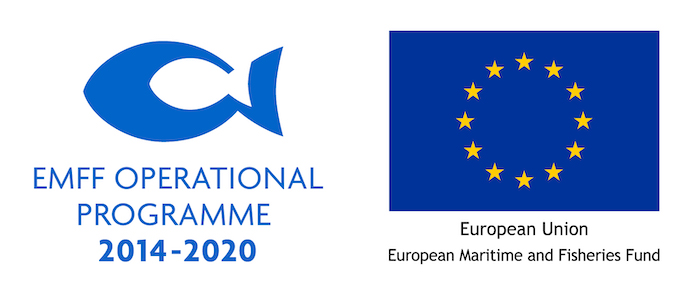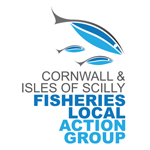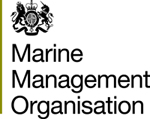

Red mullet is a regular summer visitor to south west coasts of the UK and is caught near to shore by netters. Red mullet has a unique texture somewhere between white and oily fish. Its high fat content adds a richness to it's flavour. It's liver is considered a delicacy. It has all the healthy eating attributes of white fish: high in protein and vitamin rich and also has the health benefits of being a source of Omega-3 fatty acids. Red mullet are very delicate and must be put straight onto ice as their quality deteriorates quickly. For best freshness source direct from a fisherman or specialist fish seller.
Red mullet make up a small, but high value part of the Cornish fishing industry's landings. Red mullet stocks are not well studied in our area. Landings data show a fluctuating quantity of red mullet landed to Cornish ports, however across the wider Celtic seas and bay of Biscay landings are declining and this has led ICES to advise a reduction in landings of 20% for the last 3 years which has been exceeded, the lack of data and concerns for fishing effort mean that red mullet is now red rated, and are on our fish to avoid list.
In 2021 a total of 41 tonnes of red mullet were landed to Cornish ports with a value of £374k (MMO data).
Updated April 2024
Cornish boats landing to Cornish ports
Demersal trawls are large nets that are pulled through the water with the bottom edge of the net touching the seabed. At each edge the net is pulled open by metal ‘trawl doors’. Sometimes referred to as Otter trawling.
Learn moreCornish boats landing to Cornish ports
Gill nets are lightweight nets made of nylon (monofilament) fishing line that are anchored to the seabed and are used to catch fish by entangling the gills.
Learn moreCornish boats landing to Cornish ports
Beam trawls are nets with a steel beam that holds the net open. The belly of the net is made of chains and the upper surface of the net is mesh. Beam trawlers pull two nets along the seabed simultaneously.
Learn moreCornwall Good Seafood Guide rates fish on sustainability using a scale of 1 to 5.
1, 2 and 3 are recommended, Fish to avoid are rated 5.
We use the system devised by the Marine Conservation Society (MCS) so our scores are comparable with the scores produced by MCS for the UK and fisheries from all around the world. For more information on scoring click here.
Red mullet are warm water fish that are related to the tropical goat fish. They feed on worms and crustaceans which they find by rooting around with a highly sensory pair of whisker like barbells, in muddy and sandy sea beds. Red mullet mature at 2 years old and at a length of 16cm. Maximum length is 45 cm. Juveniles are found inshore and in estuaries whilst adults are found in deeper water. In the English channel they spawn between May and July. Biological vulnerability score 39/100 fishing resilience is 'medium' - Cheung et al 2005.
Red mullet stocks are not well studied in our waters but overall landings in areas 7 and 8 (Biscay) have been gradually declining over the past 20 years, ICES are advising that landings are reduced by 20%, which has been exceeed for the past 2 years.
Route 2 scoring has been applied to this rating owing to the lack of reference points for fishing pressure and biomass. Striped red mullet has a medium resilience to fishing pressure.
ICES advice Striped Red Mullet 2023
ICES advice on Striped Red Mullet in areas 6, 8 and 7 a-c, 7 e-k and 9a 2020
Seafish RASS Red mullet in Gillnets North East Atlantic
Forster.R, and Smith.S, 2001 Selectivity of Gill nets used in the Cornish Red Mullet Fishery, Fisheries Science Partnership, Cefas Lowestoft
Red mullet netting code of practices CIFCA 2011
Seafish responsible sourcing guides Red mullet 2014
ICES WGNEW report 2014
Project Inshore Pre assessment database
MMO landings data
Ref -Cheung, W.W.L., T.J. Pitcher and D. Pauly, 2005. A fuzzy logic expert system to estimate intrinsic extinction vulnerabilities of marine fishes to fishing. Biol. Conserv. 124:97-111






Cornwall Good Seafood Guide is underpinned by the Marine Conservation Society (MCS) Good Fish Guide. The first UK consumer guide to sustainable seafood. For more information visit www.fishonline.org
Cornwall Good Seafood Guide is here to help us all make sustainable seafood choices. Choices that will help us keep the oceans healthy and Cornish fishers' futures safe. This website is funded by Cornwall Wildlife Trust. If you would like to make a meaningful difference to the health of our oceans, please consider making a donation to the Cornwall Wildlife Trust Ocean Emergency fund. Your donation will help safeguard these remarkable environments, ensuring that they continue to thrive for generations to come. Together, we can be stewards of the seas and champions for a healthier, more sustainable future.